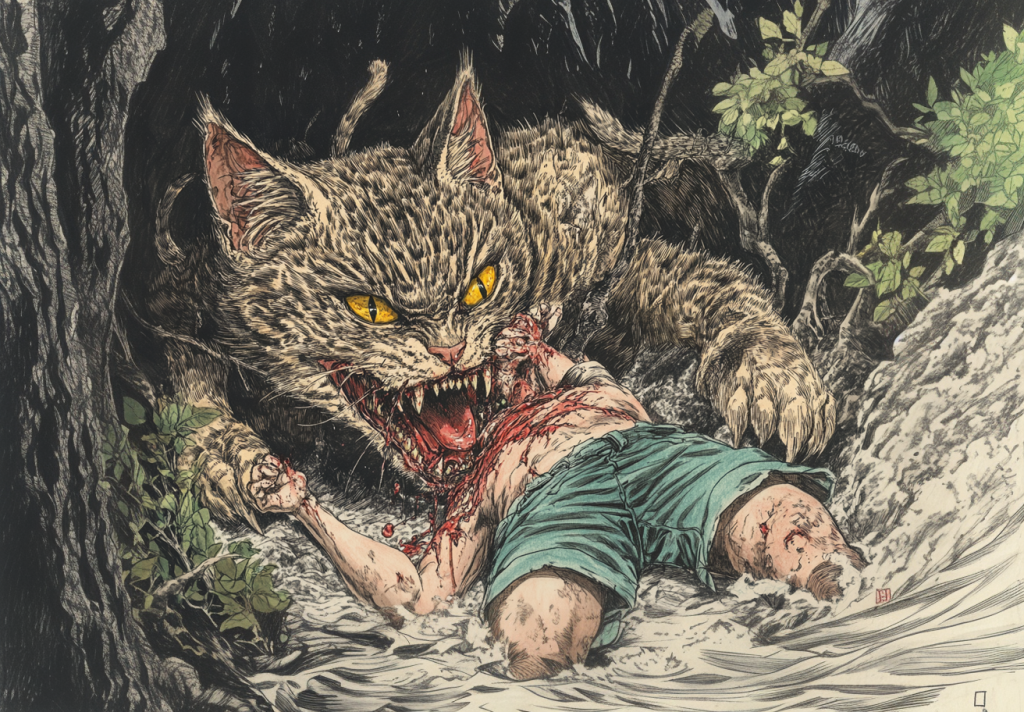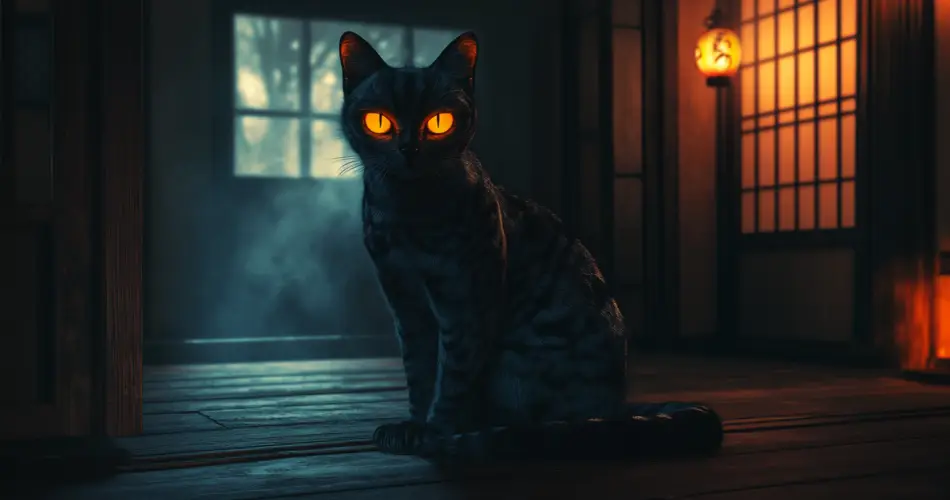Cats have lived side by side with humans for more than 10,000 years. Despite this long-term relationship, they still maintain an aura of mystery and curiosity. Their mysterious behaviours have led several ancient cultures from all over the world to create various myths and legends about house cats.
In Ancient Egypt, cats were worshipped as gods; in West Africa and Europe, they are associated with witchcraft and bad luck. In Japan, they were associated with the Bakeneko.
Key Takeaways
- Bakenekos are ordinary housecats that gain supernatural powers after living for a long time.
- Bakenekos can be evil or good, depending on their colour and how their owners treated them.
- These Mythical creatures could speak human language and shapeshift.
What is a Bakeneko?
The name Bakeneko literarily translates to “Changing cat” in English. In Japanese mythology, these mythical creatures are a type of kaibyo (Supernatural cats).
They are described as ordinary house cats that have gained supernatural power after living for a long time or after a unique transformation event.
The Bakeneko is similar to the Nekomata, another shapeshifting Kaibyo in Japanese mythology. However, it is less malevolent and has a single compared to the Nekomata’s two tails.
Read Also: The Nekomata; Japanese Two-tailed shapeshifting cat.
How do Cats become Bakeneko?
According to the legends, all house cats have the potential to become Bakeneko. This transformation occurs after a cat has lived for more than 12 years, has gained more than 3.7 kilograms in weight, or is allowed to keep a long tail. In some legends, a house cat will become a Bakeneko if it is kept in a household for more than seven years.
The spirit responsible for the transformation of the Bakeneko is believed to reside in the cat’s tail. As the cat grows in size, the spirit also grows. When it becomes strong enough (Usually after 12-15 years), it takes over the body of the cate and transforms it into a Bakeneko.
What does the Bakeneko look like?
One of the Bakeneko’s most distinctive physical attributes is its unusually large size. These mythical cats never stop growing; they can become as big as a fully grown adult.
In some cases, it was believed that the way to recognize a Bakeneko was through the length of its tail, as only cats with very long tails were powerful enough to become Bakeneko.
Bakanekos are also described as having unique human-like facial expressions that can be unsettling. Their eyes glow in the light and can be seen smiling or grinning in the dark.
House cats that have transformed into a Bakaneto also develop a creepy and unnatural gait. They stand on their hind legs and attempt to walk like humans. As the creature grows older and becomes more powerful, it becomes better at this and can move quickly on its hind legs.
Powers and Behaviour of the Bakeneko

Shapeshifting
Bakenekos are shapeshifting creatures. According to some legends, when a cat becomes a Bakeneko, it will kill its owner and take over their body to remain undetected. In this human form, the Bakeneko may feed on the life force of other members of the household, causing them to become sick or have repeated bad luck.
However, the Bakeneko does not need to kill someone to take over their bodies. In some cases, this creature can take over the bodies of women temporarily by placing their towels on its heads and dancing around with it.
Curses
Bakeneko could speak. Although they could not do this fluently, they could use this ability to place terrible curses on people. People who treated cats badly were at a higher risk of being cursed by the Bakeneko.
Fire Manipulation
The Bakeneko are also blamed for mysterious house fires. It is said that the creature uses its tail to carry fire from a lamp and spread it around the house.
Other powers of the Bakeneko
In some legends, the Bakeneko does not torment households. After transformation, it leaves the house and goes into the mountains, where it leads a pack of wolves to attack and kill unsuspecting travellers.
As a yokai, the Bakeneko also has the ability to manipulate other cats. These cats are used as spies, messengers or agents to carry out its will.
Are the Bakeneko good or bad?
Japanese myths do not clearly show the default behaviour of the Bakeneko. They are generally described as mischievous creatures that can either be good or bad.
Sometimes, the colour of the Bakaneko is used to determine its behaviour. Reddish brown and tricolour Bakeneko were believed to be the most powerful. However, while the reddish-brown Bakaneko was inherently evil, the tricolour cats were good and helpful to their masters.
How to defeat a Bakeneko
If a Bakeneko is discovered early, it can be cornered and killed like any other dangerous animal. However, older Bakenekos are significantly bigger and more powerful than the smaller ones. Defeating this powerful creature might involve some spiritual struggle to overcome the spirit of the creature.
For the Japanese, however, prevention is better than cure or regret. They prevented cats from turning into the Bakeneko by cutting the tail of the cat as soon as the cat is born. This is why bobtail cats are prevalent in Japan today.
Conclusion
The legend of the Bakeneko is a fascinating example of the role animals play in Japanese folklore and culture. It also highlights the human fear of the unknown and how natural events can be interpreted to mean complicated things.
Today, the Bakeneko continues to captivate the imagination, blending ancient superstition with a deep reverence for the mystical, adding another layer to Japan’s vibrant yōkai folklore.
